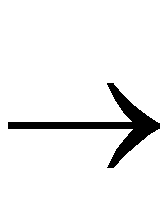FPGA Editor GuideChapter 3: Using the FPGA Editor
Adding Objects
When you add objects to your design, these new objects become part of your design's database. Use the Add command to perform these functions.
- Create new components
- Create new nets
- Add a component pin to an existing net
- Add a macro to your design
You can add objects in any of the following ways.
- Select Edit
 Add
Add
- Select Add in the User toolbar
- Enter add in the Command Line toolbar
Note: Objects cannot be added if the design is in the No Logic Changes Mode.
This section contains the following topics.
Adding Components
To add new components to the database use this procedure.
- Select vacant sites in which to place the new components.
You can select any type of site, for example, CLB, IOB, tristate buffer, pull-up resistor.
- Select Edit
 Add.
Add.
The sites become components, and these new components can be connected to other components in your design.
The Component Properties property sheet may appear on the screen for each newly created component. Whether the property sheet appears or not is controlled by the Automatic Post main window property, see the “Main Window Properties” section. Each property sheet shows the name of the new component and the name of the site in which the component is placed.
- You can edit the component properties in the property sheet and click OK or Apply to apply them, or Cancel to close the property sheet and maintain the defaults. See the “Component Properties” section for details.
Notes on Adding Components
This section includes some additional information on adding component to your design.
Adding a Net
To add a new net to the database use this procedure.
- Select all component pins comprising the new net.
Each of the selected pins must be on a placed component (not a site), and the selected pins must not belong to any other nets.
- Use the Add command in any of the following ways to add a net.
- Select Edit
 Add.
Add.
- Select Add in the User toolbar.
- Enter add in the Command Line toolbar.
The selected pins are joined as a net.
After using the Add command, a Net Properties property sheet may appear for the newly created net. Whether the property sheet appears or not is controlled by the Automatic Post main window property. See the “Main Window Properties” section for details. The property sheet shows the name of the new net, the number of pins and the routing status. You can edit the net properties in this property sheet or select Cancel. See the “Net Properties” section for details.
If the Automatic Routing Option is enabled, the new net is routed as completely as possible. If Automatic Routing is Off, ratsnest lines will connect the pins on the new net. For a description of the Automatic Routing option, see the “Automatic Routing Option” section.
Notes on Adding Nets
This section includes additional information on adding nets to your design.
Adding Component Pins to an Existing Net
To add component pins to an existing net follow these steps.
- In the Array window, select the component pins you want to add to the net.
The selected pins must be on a placed component (not a site), and the selected pins must not belong to any other net.
- Select the net to which you will add the pins in one of the following ways.
- Display a list of nets in the List window, then select the net name from this list.
- Select any net pin, ratsnest line, or routed segment on the desired net.
- Enter the Select command in the Command Line toolbar.
- Select Edit
 Add.
Add.
The selected pins are added to the net.
If the Automatic Routing option is enabled, the new net pins will be routed to the net. If Automatic Routing is Off, ratsnest lines will be drawn to the new net pins. For a description of Automatic Routing, see the “Automatic Routing Option” section.
Adding a Macro
Adding a macro to your design is described in the “With a Different Name” section of the “Working with Physical Macros” chapter.